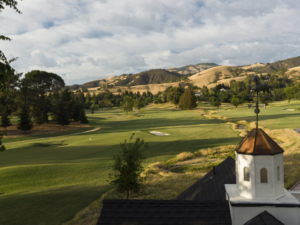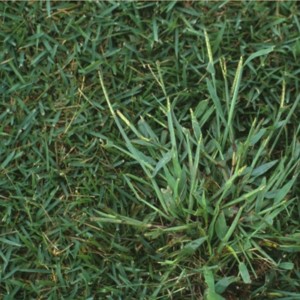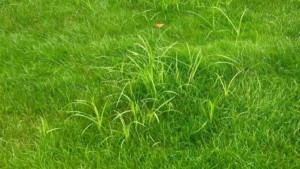Sep
Winter Overseeding Your California and Arizona Sod Lawn
We often see overseeding your warm season California or Arizona sod lawn as a process that should be done in a weekend. For some this may be the most convenient way to prep but for others its okay to take a week or two to complete the process. Trying to knock it all out in one weekend can result in some really long days out in the heat. My suggestion is to slowly start the process now so in a couple weeks when the overseed window opens you’re ready to go and won’t be wasting your entire Saturday on the lawn. Remember that the ideal window is when nighttime temperatures are in the 60’s. We’re currently sitting in the high 70’s so I would expect a couple more weeks. To follow overseed instructions scroll to bottom of this blog.
Prepping for overseed is often a large ordeal, but starting the process gradually can eliminate a lot of headaches. I want to reiterate something I have said for the past few years. The height of the grass is not associated with a quality overseed. In other words, scalping the grass down to the dirt does not guarantee good results, but opening up the turf canopy does. The shorter you mow your lawn the tighter the leaf blades become making it harder to get the ryegrass seed into the plant. If the seed is lying on the surface it will be slow to germinate and much of the seed will be lost. The seed needs a base to grow out of, and getting inside the grass plant allows for perfect moisture, heat, and a solid growing medium. This is why it’s so important to have a good warm season grass base. If you have a new lawn or a weak summer lawn it can have a direct impact on your overseed. The seed will establish much faster inside a healthy grass stand than it will on bare dirt.
Comments Off on Winter Overseeding Your California and Arizona Sod LawnSep
California and Arizona Sod Tips: It’s ALMOST Time to Overseed Your Lawn!
With the recent heavy rains and slightly cooler temperatures no doubt people are thinking about overseeding their California and Arizona lawns. While the calendar says September 18th and you will surely see people overseeding, I suggest you wait a few weeks. Follow my California and Arizona sod tips for a beautiful lawn. Overseeding does not need to be a one day process. You can begin the process a little early. Then, when temperatures are in the 60’s at night, you will just need to give your lawn one last haircut, drop the seed and begin watering.
Preparing to Overseed
Prepping for overseed is often a large ordeal. By starting the process gradually you can eliminate the headaches associated with trying to do it all in one afternoon. I want to reiterate something I have been saying for the past few years. The height of the grass is not associated with a quality overseed. In other words scalping the grass down to the dirt does not guarantee good results. Opening up the turf canopy does.
The shorter you mow your lawn the tighter the leaf blades become. This makes it harder to get the ryegrass seed into the plant. If the seed is lying on the surface it will be slow to germinate and much of the seed will be lost. The seed needs a base to grow out of. Getting inside the grass plant allows for perfect moisture, heat, and a solid growing medium. By looking at my last statement you can now understand why I say without a good warm season grass base (used on popular California and Arizona lawns) you will most likely have a poor ryegrass season. The seed will establish much faster inside a healthy grass stand than it will on bare dirt.
Comments Off on California and Arizona Sod Tips: It’s ALMOST Time to Overseed Your Lawn!Aug
Summer Tips for Your Sod Lawn in Arizona and California
Summer is wrapping up, the kids are heading back to school, and I’m sure you’re ready to come out of hibernation. While the summer heat is far from over in Arizona and California, it’s starting to become tolerable outside. With the slightly cooler mornings it’s time to get back outside and get your lawn ready for fall. Most people start thinking about overseeding their California and Arizona sod in September, but ideally you wouldn’t start the process until October when nighttime temperatures get into the 60’s. Between now and then there are some important steps you need to do to get your lawn ready and to save some headaches down the road.
Between May and September you probably noticed your lawn has grown at twice the rate it does during the winter months. Warm season grasses love the warm, wet weather. Most people thought the hot weather would keep the grass from growing well, but remember warm season grasses optimal growing temperatures are between 90-105 degrees. During this season any of your weaker areas should have filled in with the warm season grasses runners. These spots can be slow to fill in during the dry, hot days but as soon as the humidity kicks in the grass really takes off. If you still have large open spots I would suggest picking up a few rolls of sod and patching them prior to overseed. You don’t want to seed directly into the soil.
Comments Off on Summer Tips for Your Sod Lawn in Arizona and CaliforniaApr
Spring Lawn Transition Questions Answered for California and Arizona Sod!
Spring has sprung and your warm season sod might need a little help with the transition in California and Arizona. Mr. Wise Grass is here to help! Check out his latest video for tips on how to keep your lawn looking the best in the neighborhood!
IMPORTANT! FOLLOW THESE STEPS FOR A BEAUTIFUL, LUSH LAWN:
Step By Step Transitioning for California and Arizona Sod
Comments Off on Spring Lawn Transition Questions Answered for California and Arizona Sod!Jan
Weed Control Tips for Your California and Arizona Lawn
2017 has started out nicely with some timely rainfalls to keep most of you from having to water your lawn. It has also helped us move closer to getting out of the drought we’ve been suffering from for the last few years. The winter storms are helping us replenish our water supplies but they’re also helping germinate all of those of those summer annual weeds in the soil. The good news is weeds are relatively easy to contain. There are some types such as annual bluegrass, crabgrass, and nutsedge that are a little more complicated but timing pre-emergent herbicide applications can save you a lot of headaches with weed control. In this blog I will go over various weeds and some ways to control them as well as discuss herbicide timing.
Weed control management is a function of several different factors but some of the things you can do to keep your lawn healthy are maintain the proper mowing height, don’t overwater your lawn, fertilize monthly, and aerate the turf when the soil becomes compacted. These items right here can be the difference between weeds slowly emerging in your lawn and taking over your lawn. A healthy lawn will push out weeds and keep them to a minimum. If you have very few weeds emerge during the year chemical application is unnecessary and weeds can be pulled by hand as they appear.
Comments Off on Weed Control Tips for Your California and Arizona Lawn
Apr
April Lawn Transition Tips
For most parts of the country spring means a return to warmer temperatures and usually some good rain storms. For the desert southwest this typically means hot temperatures and the occasional rain event. We were lucky enough to get some late season El Niño storms this month which will have a nice impact on our warm season grasses.
The transition season has officially begun and over the next month you will start to see your underlying warm season grass start to push out the winter ryegrass. The hot temperatures will start to take their toll on the ryegrass and it will start to die out. It’s not uncommon to start to see dry patches emerge in your lawn that looked perfect the week prior.
As much as it may pain you to see sections of your beautiful lawn start to die back remember this is a good thing. Sections of your lawn will always dry out before others areas simply because of the soil texture, compaction, or sprinkler coverage. It’s important to rule out sprinkler issues and if it is merely a transition dry spot rest easy. For these spots I recommend taking a hard toothed rake and rake up the dead ryegrass that lies on the surface. This dead material is shading out the bermudagrass down below and preventing it from getting water and sunlight. Keeping your lawn mowed below ¾” during this time of the year and power raking or verticutting will also help remove dead material from shading your summer grass.
Comments Off on April Lawn Transition TipsSep
Fall Overseeding and Your Lawn
The days are getting shorter and the heat is starting to die down a little as we enter the fall season. With fall comes the onset of overseeding in many parts of the country and the West Coast is no different. For those new to overseeding let me give you a brief definition. Overseeding is simply the process of seeding a cool season grass into your warm season turfgrass in order to maintain winter color. This is not a mandatory process if you have grass, but it is one of the options that are out there for homeowners and professionals.
There are a few options during the fall months to take care of your lawn, and without question the most popular is to overseed. Outside of overseeding you have the option of using turf colorant such as Endurant to give your dormant grass a nice green appearance. Or you can just let your lawn go dormant for the winter months (brown can be the new green!). There is no right or wrong approach, so decide what you would like to do as the temperatures begin to drop over the coming weeks.
If you will be letting your lawn go dormant it will stay fairly green until the first hard frost which is around Thanksgiving and will start to green up in late March. If you have a paspalum lawn you can usually get through the month of December with a green lawn and it will start greening up in early March.
Comments Off on Fall Overseeding and Your LawnJun
Spring/Summer Transition and Your Lawn
We all know that transitioning from ryegrass back to a warm season grass is difficult (especially for California and Arizona sod), but throw in some cooler than normal weather and now you have a battle. Every year the producers of ryegrass seed seem to make their seed a little more heat resistant in search of that year round turf. The problem with this is that we’re shortening the growing window of our warm season turf. Not to mention that cool season grasses in the desert areas use much more water than the underlying warm season turf. The solution is to aide your lawn in transition, and to get your lawn free and clear of ryegrass in the next couple weeks.
Before I go into techniques to remove ryegrass I want to make a couple points about how the average lawn looks at this time of the year. We all love our winter lawn for its color, texture, and feel, but it’s important to remember that it puts agronomic stress on your lawn. When you have two different grasses competing for nutrients, water, and sunlight you’re bound to have an “ugly period.” The turf world refers to this as the transition period. This is the period of time when the cool season grass is starting to die off slowly and the warm season grass is trying to emerge. What creates the ugly period is the competition.
Comments Off on Spring/Summer Transition and Your LawnMay
Saving Water on Your Lawn and the Benefits of Natural Turfgrass
SAVING WATER………
Everyday we are reminded that we are in a drought situation. My last few blogs have been about this same subject, and I think it is important to continue with the topic.
The press is convinced that ripping out your lawn is the answer. But is it? No. You can have an environmentally beneficial lawn and use water wisely! Here are some more tips on how to save water while still keeping your lawn alive during our historic drought: Read the rest of this entry »
Comments Off on Saving Water on Your Lawn and the Benefits of Natural Turfgrass









